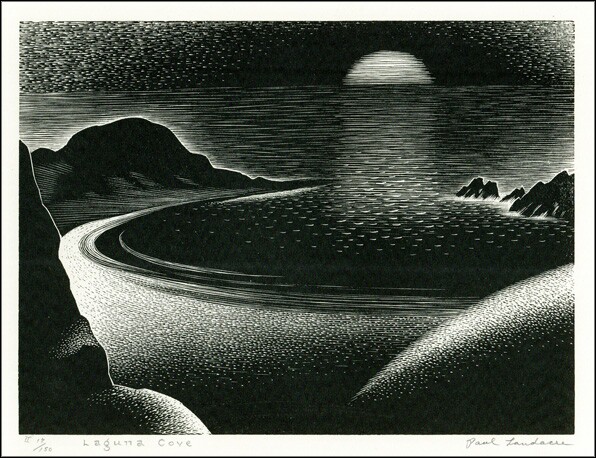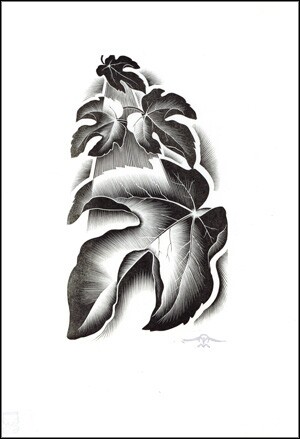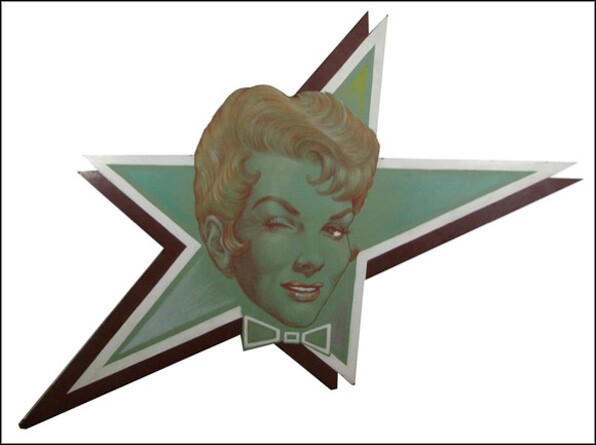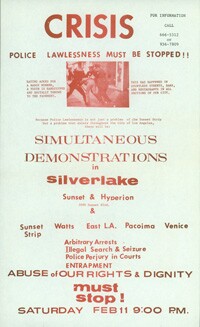Archives & Artists

Monday, January 31, was the final day of Los Angeles Arts Month, an annual campaign that every January reminds Southern Californians of the region's flourishing art community. Arts Month - as well as popular events like the Downtown Art Walk - may embody the city's burgeoning artistic potential, but the city's artistic heritage is preserved in the archives of cultural institutions across Southern California. Archiving not only finished works by L.A. artists but also papers, photographs, and other materials related to the artists' lives and practice, these collections provide insight into the artists' influences, motivations and their relationship with the city they called home.

UCLA's William Andrews Clark Memorial Library houses an extensive collection of works and archival materials related to a group of Southern California artists who practiced their art on printing presses. Fine printing emerged in the late nineteenth century as part of the Arts and Crafts Movement, emphasizing the aesthetic qualities of books and other printed works through high-quality paper, careful construction, and beautiful illustrations and wood engravings.
As the Arts and Crafts Movement spread from Great Britain to the United States, Southern California became home to a large concentration of fine printers, many of whose works were collected by Clark Memorial Library founder William Andrews Clark, Jr. The wood engravings to the left and at the top of this post, both courtesy of the Clark Library, were created by Paul Landacre (1893-1963), an influential printmaker who was a fixture of the prewar bohemian art scene in Echo Park.
More recent L.A. artists are the focus of Pacific Standard Time, an upcoming collaboration between the Getty Research Institute and more than fifty L.A.-area cultural institutions. The initiative, which launches in October 2011, celebrates the vibrant art community that emerged in postwar Los Angeles with dozens of exhibitions throughout Southern California.


Among the participating institutions is the ONE National Gay & Lesbian Archives, which is planning the most comprehensive showing of its art collection to date. Titled Cruising the Archive: Four Decades of Queer Art and Culture in Los Angeles, the exhibition will feature rarely-seen artwork alongside documents culled from the organization's archives, putting the art into a historical and cultural context. For example, paintings by Sidney Bronstein will be accompanied by the artist's diary and personal correspondence. Materials related to queer activism, like the poster to the right by P.R.I.D.E. (Personal Rights in Defense and Education), which protested a 1967 police raid on the Black Cat in Silver Lake, will also be included.
Other archives, even those without original artworks in their collections, possess a wealth of valuable materials related to Southern California artists. The Archival Center of the Archdiocese of Los Angeles preserves paper records and visual artifacts related to artist Leo Politi's work for the archdiocese. The personal photographic archive of award-winning photojournalist Shelley Gazin contains many images of local artists in their studios, including Charles Arnoldi, Robbie Conal, and Laddie Dill. And the Smithsonian Institution's Archives of American Art, while not based in Southern California, contains oral history interviews with prominent Los Angeles artists such as Clinton Adams and Peter Alexander.

Many of the archives who contributed the above images are members of L.A. as Subject, an association of more than 230 libraries, museums, official archives, personal collections, and other institutions. Hosted by the USC Libraries, L.A. as Subject is dedicated to preserving and telling the sometimes-hidden stories and histories of the Los Angeles region. Our posts here will provide a view into the archives of individuals and cultural institutions whose collections inform the great narrative—in all its complex facets—of Southern California.


